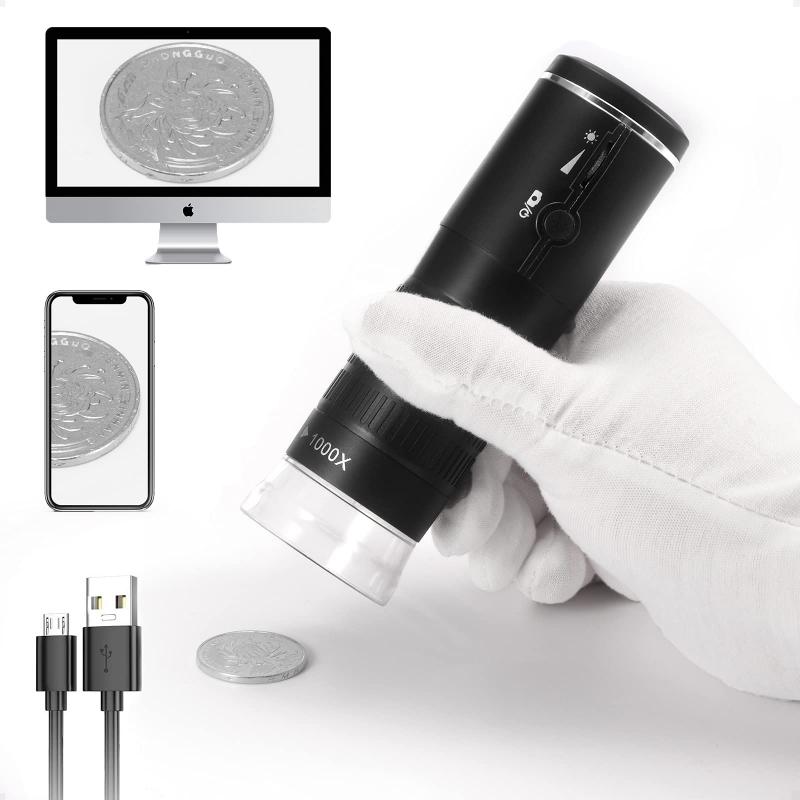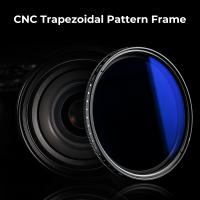What Type Of Microscope Can See Viruses ?
An electron microscope is typically used to visualize viruses.
1、 Electron Microscope: Visualizing Viruses at Nanoscale Resolution
Electron Microscope: Visualizing Viruses at Nanoscale Resolution
The type of microscope that can see viruses is the electron microscope. Unlike light microscopes, which use visible light to magnify objects, electron microscopes use a beam of electrons to create an image. This allows for much higher magnification and resolution, making it possible to visualize viruses at the nanoscale level.
Electron microscopes come in two main types: transmission electron microscopes (TEM) and scanning electron microscopes (SEM). TEMs are used to study the internal structure of viruses, while SEMs are used to study their external features.
In a TEM, a thin section of the virus sample is placed on a grid and bombarded with a beam of electrons. The electrons pass through the sample, and the resulting image is formed by the interaction of the electrons with the sample. This allows scientists to see the intricate details of the virus's internal structure, such as its protein coat and genetic material.
In an SEM, the virus sample is coated with a thin layer of metal and then scanned with a focused beam of electrons. The electrons interact with the metal coating, creating a three-dimensional image of the virus's external features. This allows scientists to study the shape, size, and surface characteristics of the virus.
It is important to note that while electron microscopes provide incredibly detailed images of viruses, they cannot capture live viruses in action. Viruses are typically studied in a fixed state, meaning they are no longer infectious. However, recent advancements in cryo-electron microscopy have allowed scientists to visualize viruses in their native state, providing valuable insights into their behavior and interactions with host cells.
In conclusion, electron microscopes, specifically transmission electron microscopes and scanning electron microscopes, are the type of microscope that can see viruses. These powerful instruments enable scientists to visualize viruses at the nanoscale level, providing valuable information about their structure and behavior.

2、 Transmission Electron Microscope (TEM): Revealing Viral Structures and Morphology
Transmission Electron Microscope (TEM): Revealing Viral Structures and Morphology
The type of microscope that can see viruses in great detail is the Transmission Electron Microscope (TEM). This powerful tool has revolutionized our understanding of viruses by allowing scientists to visualize their structures and morphology at an incredibly high resolution.
The TEM works by passing a beam of electrons through a thin section of the virus sample. As the electrons pass through the sample, they interact with the virus particles, producing an image that can be captured and analyzed. The high energy of the electron beam allows for a much higher resolution than what is achievable with light microscopes, enabling scientists to see the intricate details of viruses.
Using TEM, scientists have been able to study the size, shape, and internal structures of various viruses. This has led to significant advancements in our understanding of viral replication, pathogenesis, and the development of antiviral therapies. For example, TEM has been instrumental in revealing the complex structure of HIV, allowing researchers to target specific viral components for drug development.
In recent years, TEM has also been used to study emerging viruses, such as the Zika virus and the novel coronavirus (SARS-CoV-2). By visualizing the viral particles, scientists have been able to gain insights into their unique features and better understand their mechanisms of infection.
It is important to note that while TEM provides detailed images of viruses, it does have limitations. The sample preparation process for TEM can be complex and time-consuming, and the technique requires specialized equipment and expertise. Additionally, TEM can only visualize dead or fixed viruses, limiting its ability to study dynamic processes in real-time.
In conclusion, the Transmission Electron Microscope (TEM) is the type of microscope that can see viruses in great detail. Its high resolution and ability to reveal viral structures and morphology have greatly contributed to our understanding of viruses and have paved the way for advancements in antiviral research and therapy development.

3、 Scanning Electron Microscope (SEM): Examining Viral Surface Characteristics
Scanning Electron Microscope (SEM): Examining Viral Surface Characteristics
The Scanning Electron Microscope (SEM) is a powerful tool that can be used to visualize and examine the surface characteristics of viruses. Unlike other types of microscopes, the SEM provides high-resolution images that allow scientists to study the intricate details of viral structures.
Viruses are extremely small, ranging in size from 20 to 400 nanometers. This makes them difficult to observe using traditional light microscopes, which have a limited resolution. However, the SEM overcomes this limitation by using a beam of electrons instead of light to create an image. This allows for much higher magnification and resolution, enabling scientists to see viruses in great detail.
With the SEM, scientists can study the morphology and surface features of viruses. They can observe the shape, size, and arrangement of viral particles, as well as any surface structures such as spikes or capsids. This information is crucial for understanding the biology and behavior of viruses, as well as for developing effective antiviral treatments and vaccines.
In recent years, the SEM has been instrumental in studying emerging viral diseases such as COVID-19. Scientists have used SEM to examine the surface characteristics of the SARS-CoV-2 virus, which causes COVID-19. This has provided valuable insights into the structure and behavior of the virus, aiding in the development of diagnostic tests and potential treatments.
In conclusion, the Scanning Electron Microscope (SEM) is a vital tool for studying viruses. Its high-resolution imaging capabilities allow scientists to examine the surface characteristics of viruses in great detail, providing valuable insights into their structure and behavior. The SEM continues to play a crucial role in advancing our understanding of viral diseases and developing effective strategies to combat them.

4、 Cryo-Electron Microscopy (Cryo-EM): Capturing High-Resolution Virus Images
Cryo-Electron Microscopy (Cryo-EM): Capturing High-Resolution Virus Images
Cryo-Electron Microscopy (Cryo-EM) is a powerful technique that allows scientists to visualize and study viruses at an unprecedented level of detail. This type of microscope has revolutionized the field of virology by providing high-resolution images of viruses, enabling researchers to understand their structure and function.
Cryo-EM works by rapidly freezing the virus samples to extremely low temperatures, typically around -196 degrees Celsius, using liquid nitrogen or liquid helium. This freezing process preserves the virus in its native state, preventing any structural changes or damage that could occur during traditional sample preparation techniques.
Once the virus sample is frozen, it is placed in the Cryo-EM microscope, which uses a beam of electrons to image the virus. The electrons interact with the sample, producing a 2D projection image. Multiple images are then collected from different angles, and advanced computational algorithms are used to reconstruct a 3D model of the virus.
The high-resolution images obtained through Cryo-EM have provided valuable insights into the structure and function of various viruses, including HIV, influenza, and the Zika virus. This information is crucial for understanding how viruses infect cells, replicate, and evade the immune system. It also aids in the development of antiviral drugs and vaccines.
In recent years, Cryo-EM has seen significant advancements, allowing researchers to capture even higher-resolution images of viruses. This has been made possible by improvements in microscope technology, such as the development of direct electron detectors and advanced image processing algorithms. These advancements have pushed the resolution limits of Cryo-EM, enabling scientists to visualize individual atoms within a virus particle.
Overall, Cryo-Electron Microscopy is a cutting-edge technique that has revolutionized our understanding of viruses. Its ability to capture high-resolution images of viruses has provided valuable insights into their structure and function, and it continues to be a vital tool in the fight against viral diseases.






































